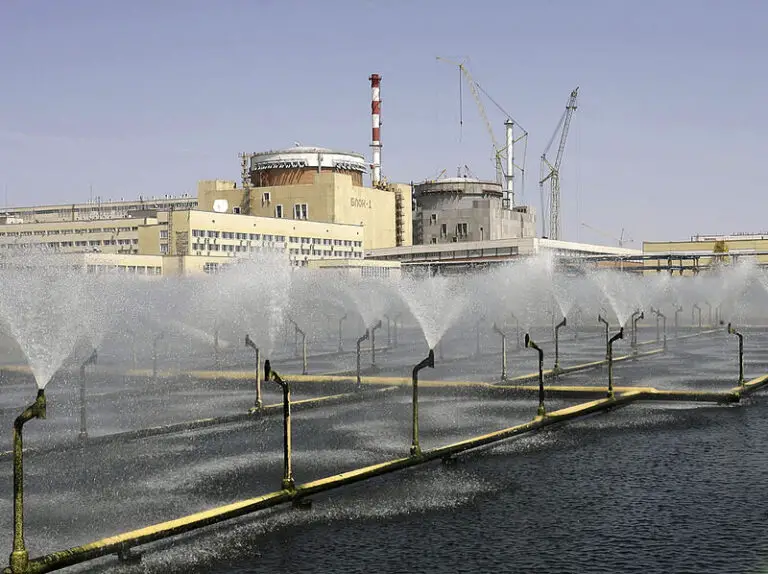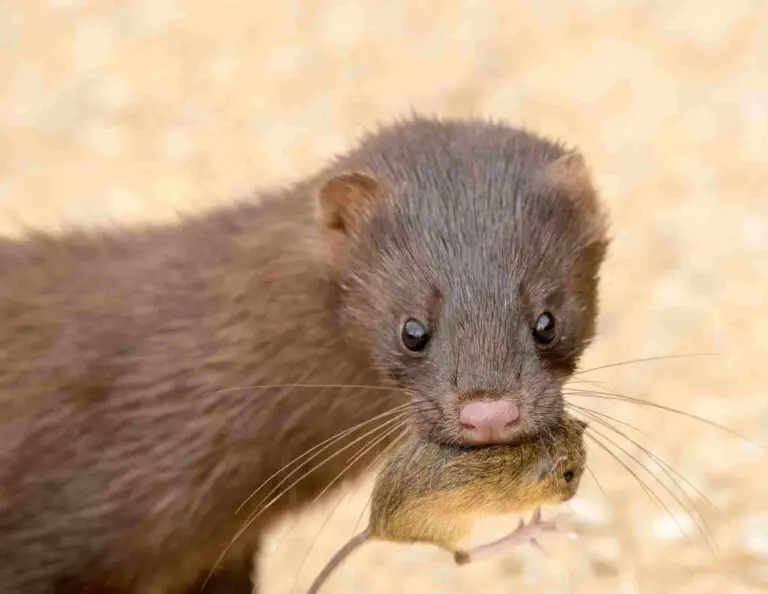Crop Rotation Meaning, Types, Crops, Planning, and Examples
Crop rotation is the successive cultivation of different plant species within a given land area, over a period of time. It is one of the most important and common techniques of soil conservation. This article discusses crop rotation meaning, types, crops, planning and examples, as outlined below;
-Crop Rotation Meaning: 5 Ways to Define Crop Rotation
-Types of Crops (Floral Species) Used in Crop Rotation
-Crop Rotation Order and Planning
-Crop Rotation and Soil Erosion
Crop Rotation Meaning: 5 Ways to Define Crop Rotation
Crop rotation is the growing of different crops in a sequential manner, on the same land, as a means of optimizing productivity [9].
The above definition implies that crop rotation optimizes productivity. It is however important to outline some of the ways by which this optimization will be achieved, within the context of crop rotation. This is expressed in the following definition;
Crop rotation is the practice of planting a series of crop species in succession on a given land, to optimize soil moisture retention, nutrient availability, structure and overall quality.
The effectiveness of crop rotation depends on the species of crops involved [7], and the sequence of succession by which they are cultivated. This can be considered when defining crop rotation.
Crop rotation is a soil conservation technique which aims to improve soil health by encouraging plant diversity, through the cultivation of different species of crops in a successive manner.
The crops species which are used in crop rotation, usually differ from each other in terms of their basic growth patterns and nutritional needs.
This ensures that the consumption of soil moisture and nutrients is not confined to a particular pattern or group of minerals for a long period of time. As a result, the overall moisture content and concentration of nutrients in the soil are not depleted.
With regards to the sequential nature of crop rotation, the cultivation of successive crop species depends on seasonal variations, and other factors which are mentioned in the alternative crop rotation meaning given below;
Crop rotation is the selection and planting of different crop species on a successional basis, in different seasons, with due consideration crop characteristics, climate, soil characteristics and available labor.
Lastly, crop rotation meaning can be given with regards to its potential to reduce crop pests. Because of the alternation of species in crop rotation, pests are generally unable to thrive, especially as they are often crop-specific in their behaviors [4]. This is further stated as follows;
Crop rotation is the successive cultivation of dissimilar crops on an agricultural land, as a measure to achieve soil conservation, pest and disease control, and high productivity.
Types of Crops (Floral Species) Used in Crop Rotation
Kinds of crops usually grown in crop rotation include vegetables (or ‘row crops’), legumes, cereals and grasses.
The key principle used in selecting plant species for crop rotation, is to ensure that crops involved in the rotation have good root structure, varying nutritional needs, compatibility with physicochemical conditions of the soil, as well as with the climate.
These attributes ensure that the crops are able to thrive, while protecting and conserving the soil.
A brief discussion of each of the major crop types is given as follows;
1). Legumes used in Crop Rotation
Examples of legumes which are commonly used in crop rotation are; beans, alfalfa, groundnut, clover and pulses.
The characteristics of legumes which make them suitable for crop rotation include well-developed tap root system, nodules, and conservative nutrient/moisture consumption.
Legumes also enrich the soil through the process of nitrogen-fixation [5]. This quality makes them good for alternation with crops that require significant amounts of nitrogen for growth. It is also beneficial to the environment, since the fixation of nitrogen in soil, slightly reduces the concentration of nitrous oxide; a greenhouse gas, in the atmosphere [6].

2). Vegetables
These crops are referred to as ‘vegetables’ because their leaves and stems constitute the most important parts of the plants.
Various species of vegetables are used in crop rotation. They include brassica species like broccoli, cabbage and Brussels sprouts, umbels like carrot and fennel, among others such as eggplant, lettuce, peppers, garlic, spinach and onions.
Like legumes, many of these vegetables have good root structure. As part of measures for soil conservation, they are often planted in rows, hence the alternative term ‘row crops’.
Vegetables are however only used as intermediates in crop rotation. This is because, compared to other crops, they are not highly beneficial to the soil.
Most vegetables do not provide an effective soil cover, meaning that the prospect of erosion is relatively-high when vegetables are cultivated.
Also, the nutrient uptake of vegetables is high compared to their nutritional benefits to the soil. This can be observed in the rapid rate of biodegradation on vegetable-cultivated soil, which encouraged carbon dioxide release (rather than sequestration), and leaves less minerals to be assimilated by the soil.
Generally, the aim of planting vegetables in crop rotation, is to reap high yield within a short period of time. These vegetables must therefore be alternated with more soil-conserving crops, in order for the overall process to be effective.
3). Cereals used in Crop Rotation
Cereals used in crop rotation include maize, wheat, oat and barley.
In many crop rotation projects, cereals are rotated with legumes. This association between the two crop types has been found to be of benefit to the soil in terms of productivity and fertility [8].
Advantages of cereals in crop rotation deep root system, conservative nutrient-and-moisture uptake, and soil-protective characteristics. Because these cereal crops are resilient, they can be used to achieve sustainability in agriculture by acting as a barrier to leaching and soil erosion, while enabling the soil to improve in its structural and physicochemical characteristics.
Aside crop rotation, cereal crops are useful for other soil conservation methods like strip cropping, and cover cropping. They may also be referred to as row crops, as they are often cultivated in rows.
4). Grasses
Grasses can be categorized within the same group.
Essentially, the role of grasses in crop rotation is to serve as a temporary source of protection and nutrient-replenishment to the soil.
It may be convenient to describe the cultivation of grasses in crop rotation as cover cropping, which is itself another method of soil conservation.
Some beneficial qualities of grasses include well-developed deep root system, soil protection, weed and pest control, and nutrient replenishment.
The competitive and dense growth pattern of grasses make them effective at protecting soil from erosion, enhancing soil moisture retention, nutrient content, and limiting weed growth.
Grasses like sugarcane are also associated with nitrogen-fixing bacteria that improve soil health and fertility [1].
When grasses undergo biodegradation, they may serve as biomass fertilizer (organic fertilizer/manure), which improves soil fertility.
The types of crops used in crop rotation can be categorized into cover crops, filler crops and cash crops.
Cash crops refer to vegetables and other similar crops which are cultivated for short-term yield. These crops thrive due to the conservative and soil-enriching effects of the other two categories.
Filler crops include cereals like maize, which are used to achieve conservative production. They are less demanding in terms of nutrient and moisture uptake, than the cash crops.
Cover crops include grasses, which are cultivated solely for soil conservation and enrichment.
The 8 Types of Crop Rotation
Types of crop rotation include one-year, two-year, three-year, four-year, one field, two-field, three-field and four-field rotation systems.
They are classified based on duration and land use.
-Types of Crop Rotation Based on Duration
1). One-Year Crop Rotation
In one-year crop rotation, each full phase of rotation is completed within approximately one season or year.
What this implies is that, if two different crops are involved in a one-year crop rotation project, the two crops would have completed one round of successive cultivation and harvest within a period of one year.
This is the shortest duration of crop rotation, and involves short-term crops like cereals. Examples of crop species that are used in one-year crop rotation system include maize; rice, and wheat.
Because of the types of crops involved, the relatively-short period of farming, and the need for high productivity, one-year crop rotation usually involves high levels of fertilizer application. Synthetic fertilizer as well as organic fertilizer from biomass can be used.
Some problems associated with this type of rotation system include high nutrient demand, and overuse of agricultural chemicals.
2). Two-Year Crop Rotation
The overall time period for successive crop cultivation and harvest in this type of crop rotation is two years.
Crops used in two-year rotation projects, are selected based on their lifespan, compatibility with each other, the soil, and the climatic or environmental components of the ecosystem.
More than two different crops can be rotated within a two-year period, and these are usually grouped and cultivated such that they can be planted and harvested within the specified time.
It is important to note that crop rotation can involve the cultivation of more than one crop specie on an agricultural land at a given time. The only crucial factor is the alternation of the crops involved in a rotation scheme, by successive replacement of one crop specie with another. This creates a sustainable cycle that is beneficial to the health of the crops, soil, and the entire environment.
Two-year crop rotation is the most common type or system of crop rotation, because it combines the basic attributes of short-term high yield and soil conservation, which are both beneficial to the economy and ecosystem.
Crops used in two-year rotation include legumes, cereals, root crops, and grasses. Sugarcane, sorghum, maize and potato are examples.
3). Three and Four-Year Crop Rotation
Three-year and four-year crop rotation systems complete a full rotation phase within three (3) and four (4) years respectively.
Factors used to select species in these types of crop rotation include physicochemical attributes and nutrient-content of the soil, duration or lifespan of crop species, moisture content and retention capacity of the soil, climate, availability of water and fertilizer, and compatibility of the crops with each other within the rotation cycle.
-Types of Crop Rotation based on Land Use
1). One-Field Crop Rotation
In one-field crop rotation, the entire land area is cultivated at a given time.
This cultivation may involve one crop specie, or more than one specie. The distinguishing factor or this type of crop rotation is the fact that the entire land area is used.
2). Two-Field and Three-Field Crop Rotation
In two and three-field crop rotation, the land area is partitioned into two and three parts respectively.
Out of these parts, one is usually left without cultivation at every given point in time. The reason behind this approach, is to allow the soil in the uncultivated area to be replenished while other parts of the land are cultivated.
Cover cropping or mulching (among other techniques) may be used to protect the soil while it is allowed to lie fallow.
The other part(s) of the land may be used to grow one or more rotation crops, and it is usually ensured that a formerly cultivated section lies fallow after each complete phase of rotation.
Two and three-field crop rotation systems are effective for rotating crops like legumes and grasses, which are relatively conservative and resilient.

3). Four-Field Crop Rotation
In four-field crop rotation, the land area is partitioned into four sections.
There are two possible approaches that may be applied in cultivating the land. One of these is simultaneous cultivation of all four sections, with four different crop species.
The other is cultivation of some sections (usually three of the four) while the remainder is allowed to lie fallow.
Four-year crop rotation is effective for large-scale agriculture, with legumes, cereals, vegetables and grasses being involved in the rotation.
Crop Rotation Order and Planning
Two essential elements of crop rotation are the rotation decisions (sequence, duration, land use) and the crop rotation plan [3].
Planning in crop rotation is important because it is a systematic practice that required definite and predefined measures to be successful.
The decisions made in the course of planning determine the type of crop rotation (one-year, four-year, four-field) scheme that will be used, as well as the tools in terms of fertilizer, irrigation, and soil conservation techniques (cover cropping, mulching, strip cropping) to be applied.
Some factors to consider when creating a crop rotation plan are; soil type, nutrient availability, types of crops that are accessible, and compatible with the soil, duration of cultivation and harvest, and environmental conditions.
When selecting crops and deciding on the pattern of succession or sequence, it is important to ensure that soil conservation is considered. This implies that the crop rotation schedule must include crop species that protect and replenish the soil, and/or a period for the land to lie fallow.
In many crop rotation schemes; the nutrient-demanding cash crops and other high-yield, short-term species like cereals, are cultivated after soil-conserving, resilient species like legumes and grasses.
This approach ensures that the nutrient-demanding crops benefit from nitrogen fixation and soil replenishment which was induced by the more resilient and conservative crops, without degrading the soil.
Example of Crop Rotation
The following table presents an example of a four-field, one-year crop rotation scheme over a total period of four years;
| Field 1 | Field 2 | Field 3 | Field 4 | |
| Organic Manure Application | ||||
| Year 1 | Vegetables | Legumes | Root Crops | Grasses |
| Year 2 | Legumes | Root Crops | Grasses | Vegetables |
| Liming/Organic Manure Application | ||||
| Year 3 | Legumes | Vegetables | Grasses | Root Crops |
| Year 4 | Vegetables | Legumes | Root Crops | Grasses |
The above scheme does not include any definite fallow period for the fields (partitions of agricultural land area). This is because the role of soil nutrient replenishment is handled by organic manure in this case. Grasses can be considered an indication of fallowing however, since these grasses act as cover crops and encourage nitrogen fixation, which improves soil health.
The replacement of fallowing with fertilized application maximizes land area, although excessive use of synthetic fertilizer can degrade soil and water resources within the vicinity.
Crop Rotation and Soil Erosion
Crop rotation can reduce the risk of soil erosion, because it tends to conserve, protect and replenish the soil.
Studies have linked crop rotation to the physicochemical properties of soil [2].
Because of the diversification and succession of plant species in crop rotation, the soil becomes more stable in its composition and structure. Typically, cover crops are included in the rotation sequence, which helps to protect the soil and supply nutrients (nitrogen, carbon, etc.).
Crop rotation is also practiced in combination with other soil conservation methods like terracing, strip cropping and mulching, all of which help control erosion.
Conclusion
Crop rotation is the successive cultivation of different crops on a given land over a defined period of time, as part of measures for soil conservation and replenishment.
Crop categories used in crop rotation include;
- Legumes
- Vegetables
- Cereals
- Grasses
Types of crop rotation are;
- One-Year Crop Rotation
- Two-Year Crop Rotation
- Three and Four-Year Crop Rotation
- One-Field Crop Rotation
- Two-Field and Three-Field Crop Rotation
- Four-Field Crop Rotation
These are classified based on project duration and land use.
Crop rotation can only be effective when it is well planned. Factors which control the planning of crop rotation projects include soil characteristics, crop species. available labor, and environmental conditions.
The practice of crop rotation can reduce soil erosion because it protects the soil and minimizes disruptions in terms of nutrient depletion and structural changes.
References
1). Carvalho, T. L. G.; Pires, E. B.; Saraiva, R.; Vargas, L.; Bomfim. A. C. J. S.; Ballesteros, H.; Baldani, I.; Hemerly, A. S. (2014). “Nitrogen fixation in grasses – gluconacetobacter activates genes in sugarcane.” BMC Proceedings 8(Suppl 4):O20-O20. Available at: https://doi.org/10.1186/1753-6561-8-S4-O20. (Accessed 19 May 2022).
2). Degu, M.; Melese, A.; Berhan, D.; Tena, W. (2019). “Effects of Soil Conservation Practice and Crop Rotation on Selected Soil Physicochemical Properties: The Case of Dembecha District, Northwestern Ethiopia.” Applied and Environmental Soil Science 2019(6):1-14. Available at: https://doi.org/10.1155/2019/6910879. (Accessed 20 May 2022).
3). Dury. J.; Schaller, N.; Garcia, F.; Reynaud. A.; Bergez, J.(2011). “Models to support cropping plan and crop rotation decisions. A review.” Agronomy for Sustainable Development 32(2):567-580. Available at: https://doi.org/10.1007/s13593-011-0037-x. (Accessed 20 May 2022).
4). He, H.; Liu, L.; Munir, S.; Bashir, N. H.; Wang, Y.; Yang, J.; Li, C. (2019). “Crop diversity and pest management in sustainable agriculture.” Journal of Integrative Agriculture 18(9):1945-1952. Available at: https://doi.org/10.1016/S2095-3119(19)62689-4. (Accessed 20 May 2022).
5). Schipanski, M. E.; Drinkwater, L. (2012). “Nitrogen fixation in annual and perennial legume-grass mixtures across a fertility gradient.” Plant and Soil 357(1-2). Available at: https://doi.org/10.1007/s11104-012-1137-3. (Accessed 20 May 2022).
6). Shah, A. (2014). “Determination of Biological Nitrogen Fixation Induced N 2 O Emission from Arable Soil by Using a Closed Chamber Technique.” Applied and Environmental Soil Science 2014(1, article gb1032):1-10. Available at: https://doi.org/10.1155/2014/685168. (Accessed 20 May 2022).
7). Shah, K.; Modi, B.; Pandev, H. P.; Subedi, A.; Aryal, G.; Pandev, M.; Shrestha, J. (2021). “Diversified Crop Rotation: An Approach for Sustainable Agriculture Production.” Advances in Agriculture 2021(2). Available at: https://doi.org/10.1155/2021/8924087. (Accessed 20 May 2022).
8). Zeng. Z.; Lu, Z.; Jiang, Y.; Zhang, K.; Yang, Y.; Zhao, P. (2016). “Legume-cereal crop rotation systems in China.” Crop Rotations: Farming Practices, Monitoring and Environmental Benefits (pp.51-70). Available at: https://www.researchgate.net/publication/308724028_Legume-cereal_crop_rotation_systems_in_China. (Accessed 19 May 2022).
9). Zohry, A. A. E.; Ouda. S. A. (2018). “Crop Rotation Increases Land Productivity: An Approach to Secure Future Food.” Crop Rotation (pp.39-54). Available at: https://doi.org/10.1007/978-3-030-05351-2_3. (Accessed 20 May 2022).




